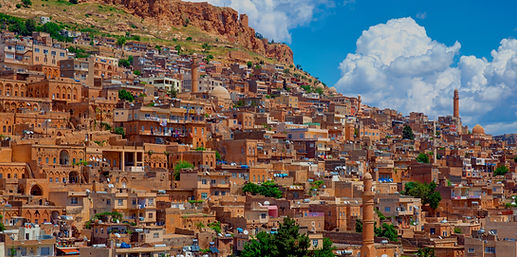Hestia statue displayed in Türkiye’s Manisa Museum
- jasonmoorebox
- Jul 31
- 3 min read

A Hellenistic-period statue of the goddess Hestia, unearthed during the 2005 excavations at the ancient city of Aigai in the Yunusemre district of Manisa, western Türkiye, is now on display at the Manisa Museum, which opened this year.
The statue, which is approximately 2.7 meters (8.8 feet) tall and about 2,200 years old, depicts Hestia, the goddess considered the protector of homes and cities. It is said to be the only known statue of Hestia from the Hellenistic period that has survived to the present day.
Excavations have been ongoing since 2004 at Aigai, an ancient city with a history of approximately 2,700 years. Hundreds of artifacts uncovered during these excavations are now on display at the newly opened Manisa Museum. A special hall was designed in the museum, modeled after the bouleuterion (council building) of Aigai. In this hall, visitors can see the statue of the goddess Hestia, symbolizing the decision-making processes of the council, along with honor statues dedicated to benefactors who contributed to the construction of the council building.
Professor Yusuf Sezgin, head of the Aigai excavations and chair of the Archaeology Department at Manisa Celal Bayar University, said: “The excavations at the ancient city of Aigai began in 2004 and are still ongoing. We are currently in a very special hall inside the Manisa Archaeology Museum, standing before the statue of the goddess Hestia, which was found in the Aigai council building. This hall, in particular, was designed to resemble the ancient council building, both in layout and function. The statue of the goddess Hestia and the honor statues have been placed according to their original positions in antiquity. This setup allows people to feel as though they are inside the council building from 2,500 years ago, which makes it quite significant.”

“Hestia was one of the most important and revered goddesses of the ancient period, known as the protector of homes and cities. We know that council buildings in antiquity often featured statues of Hestia. During the 2005-2006 excavations, we found this statue of Hestia in two pieces. It was kept in our excavation depot for many years. Now, for the first time this year, with the opening of the museum, it is on display. Hestia was a goddess who protected the unity and order of the city. When making decisions in the council, she stood directly in front of you. You had to look into her eyes while deciding the city’s fate – this alone highlights her importance. This is the only known Hestia statue from the Hellenistic period. In the Roman period, Hestia was called 'Vesta,' and you can find Vesta statues in various museums around the world. But this is the only known statue of Hestia from the Hellenistic era that has survived to today. And it’s currently on display at the Manisa Archaeology Museum, visible to all. In this respect, the Manisa Museum has become one of the most important museums in the world,” Sezgin added.
Sezgin also noted: “The Aigai council building has another important feature. Particularly during the excavations between 2004 and 2006, we uncovered a large group of statues. These statues stood on pedestals – and we also found those pedestals. Ancient Greek inscriptions were written on them. Over time, we managed to piece everything together. After restoration, they are now being exhibited here. The pedestals bear names, indicating who the statues represent. Apparently, a father and son named Antiphanes and Diaphenes sponsored the construction of the council building. This was a significant contribution. Since the council building was the city’s most important public structure, its statues were erected inside it by the people. These are what we call 'honor statues.' This group of statues is considered among the most important Hellenistic sculpture groups found in Anatolia. The father and son statues, in particular, are exceptionally well-preserved. Very few such statue groups from antiquity have survived to the present day. The council building in Aigai was originally constructed about 2,400 years ago, but it was rebuilt around 2,200 years ago – and these statues were erected during that reconstruction. So they are approximately 2,200 years old.”




Comments